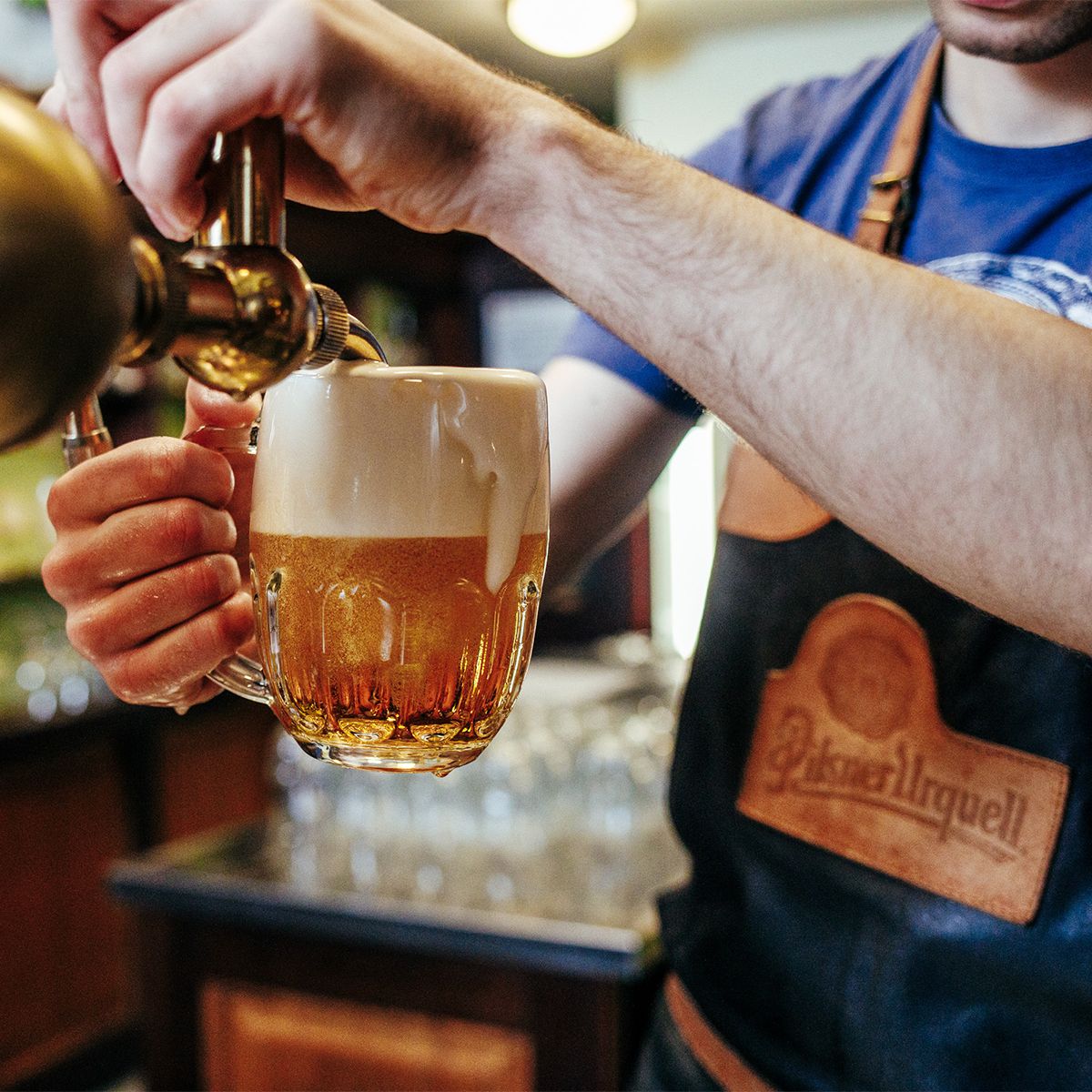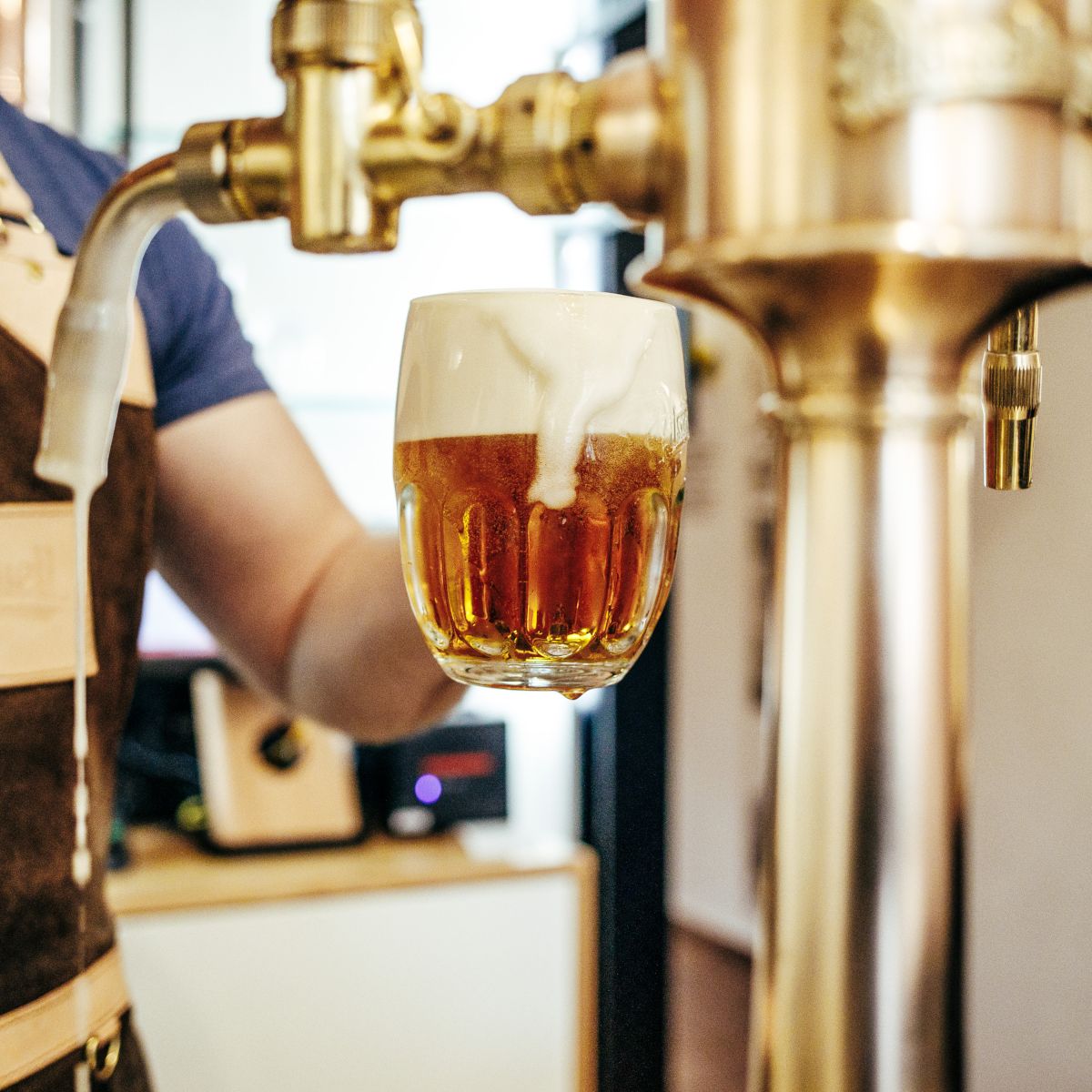
When Josef Groll brewed the world’s first golden lager in 1842, he changed beer forever. He also changed the way beer was poured.
Up until the 19th century, beer was served directly from the keg. Usually it was poured into clay cups with covers, which was fine because this brew was dark and cloudy—and consumed mainly for the calories. They called beer liquid bread and it looked that way too!
Groll’s invention of golden lager encouraged Tapsters to serve Pilsner Urquell in glasses. This new beer looked different, especially when it was topped with rich, velvety white foam! Groll knew that the wet foam seals in freshness and flavour, just like the covers on the old clay cups.
Dense, wet foam is a product of our brewing process, when the finest protein is extracted from our barley through triple decoction. We use twice as many hops as the average lager, and the oils from these Saaz hops, in combination with barley protein, contribute to the foam. We serve Pilsner Urquell with foam because it’s part of our beer and helps ensure that each sip tastes perfect.
Groll’s golden lager not only looked great, it tasted great too. That’s why we still brew and pour Pilsner Urquell the way he did, and we’ll never change.


